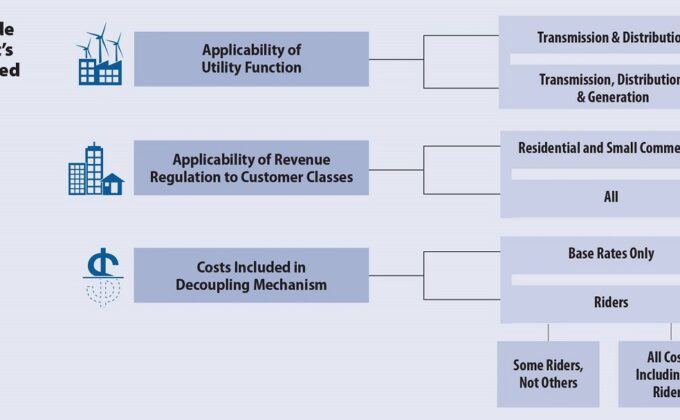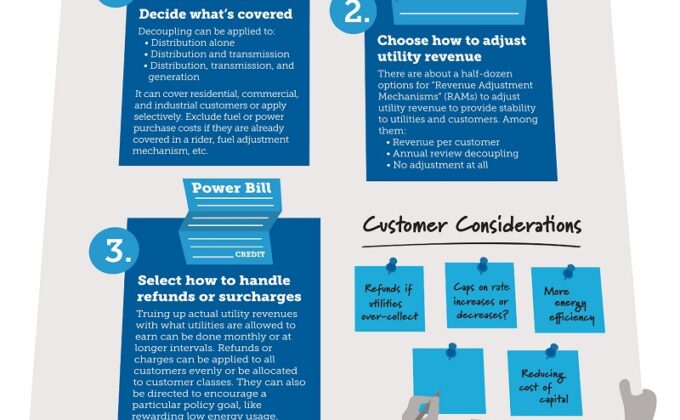Filter >>
Content Filter:
Two years ago, RAP produced a Menu of Options for reducing greenhouse gas (GHG) emissions from the power sector for the National Association of Clean Air Agencies. The report contains 26 detailed chapters, 25 of which look at proven… View Summary +

Since its formation over a hundred years ago, the electric utility industry in the United States, and the regulatory framework that governs it, has traditionally operated under the core principle that if you sell more electrons, you earn more money. View Summary +

In this webinar, RAP explores the merits of decoupling and describes how states can tailor decoupling mechanisms to work best for them. Drawing from the report Decoupling Design: Customizing Revenue Regulation to Your State’s Priorities, Janine Migden-Ostrander and Richard… View Summary +
If the video is not visible, please accept all cookies to enable the player. Under traditional regulation, utilities make more money when they sell more electricity. Yet this equation can conflict with the public policy objectives of utility and… View Summary +

In a series of blog posts over the last several weeks, RAP has spotlighted the opportunities associated with beneficial electrification—the practice of electrifying appliances and machines that are currently powered by fossil fuels. Embracing beneficial electrification provides a significant opportunity… View Summary +

As we head into 2017, the U.S. power sector is still in the midst of a steady, technology-driven transformation. In a RAP webinar held on January 17, 2017, RAP’s Ken Colburn, Dr. Carl Linvill, David Littell, and Richard Sedano held… View Summary +
If the video is not visible, please accept all cookies to enable the player. As we head into 2017, the U.S. power sector continues its steady, technology-driven transformation. There is intense action in the states. Utility commissions, policymakers, and… View Summary +
Many states have adopted utility decoupling, or revenue regulation, which breaks the link between electricity sales and revenues to the utility. Originally, it was conceived as a way to make utilities indifferent to annual sales volumes by addressing the net… View Summary +
If the video is not visible, please accept all cookies to enable the player. In a webinar for the Utah Public Service Commission, Jim Lazar, John Shenot, and Richard Sedano explore the intricacies of time-of-use rates. The speakers delve… View Summary +
In a webinar for the Utah Public Service Commission, Jim Lazar, John Shenot, and Richard Sedano explore the intricacies of time-of-use rates. View Summary +
